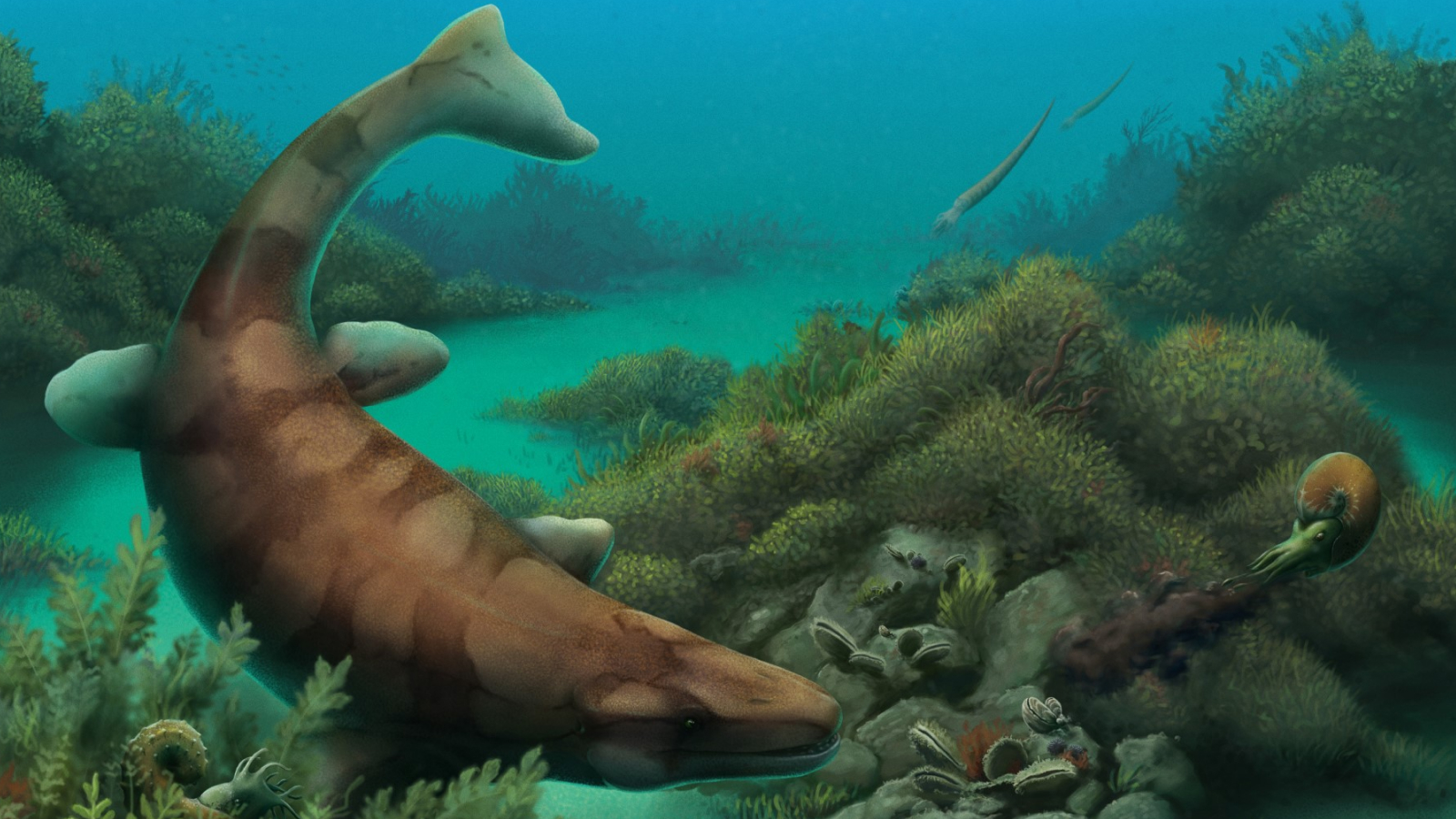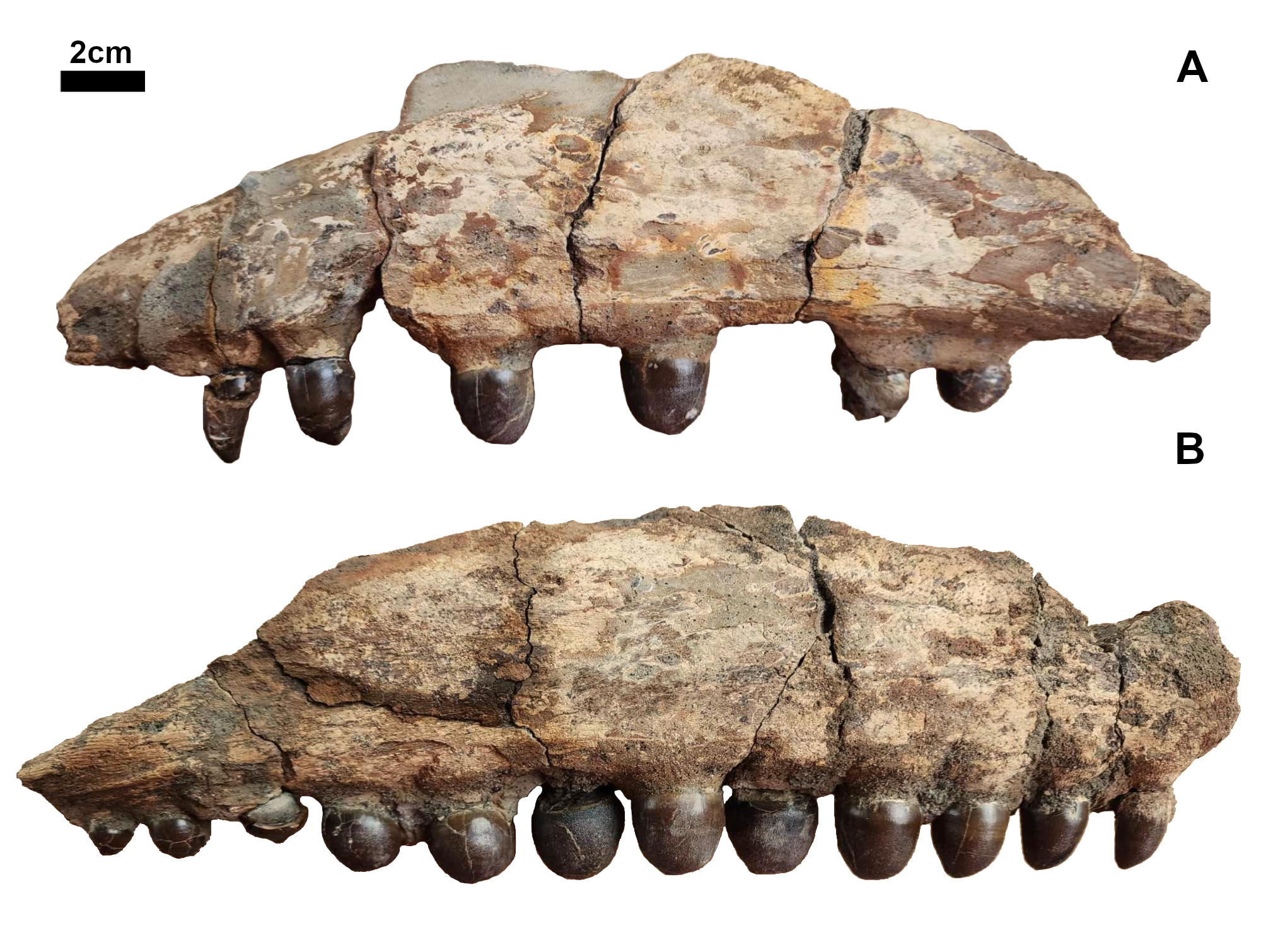
Fossils from a huge, rare mosasaur with giant globular teeth have been unearthed in Texas, a new study reveals.
The two adult jaw fragments provide insights into the lifestyle of Globidens alabamaensis, which may have reached lengths of up to 20 feet (6 meters). The blunt teeth that line the jaws demonstrate the brute force the mosasaurs brought to bear on their prey.
"These structures with their mushroom shape are great for impact attacks — for shell crushing. If something is getting away and you shatter it, that's kind of it," Bethany Burke Franklin, a marine paleontologist and educator at Texas Through Time fossil museum in Hillsboro, told Live Science. Franklin, who specializes in marine reptiles, was not involved in the study.
During the Late Cretaceous period (100.5 million to 66 million years ago), many iconic marine predators such as the dolphin-like ichthyosaurs and long-necked plesiosaurs succumbed to a changing climate and ensuing alterations to the marine ecosystem. Mosasaurs became the dominant predators in the shallow seas of the epoch, assuming niches once occupied by their better-known predecessors. These reptiles rapidly diversified, filling multiple niches in the volatile and prey-rich environment.
G. alabamaensis was discovered in 1912, but only a handful of near-complete specimens of this mosasaur have ever been unearthed. Most fossil evidence consists of teeth and small jaw fragments. Four additional Globidens species have since been described.
While most mosasaurs boasted a formidable array of dagger-like teeth, Globidens evolved blunt, rounded teeth that were suited to crushing the shells of turtles, ammonites and bivalves. The Western Interior Seaway, which bisected what is now North America during the Late Cretaceous, would have provided G. alabamaensis with a wide variety of shelled prey.
Researchers described the discovery of the two jaw bones in a paper published in the Journal of Paleontological Sciences on Aug. 14.

The fragments were discovered by a private fossil hunter in 2023 in the Ozan Formation in northeastern Texas. The deposit in which they were found dates to the Campanian Age (83.6 million to 72.1 million years ago) and is just 8 inches (20 centimeters) thick. It has nonetheless proven to be rich in fossils, including other mosasaurs.
The preservation of even part of the animal's head is exciting, Franklin said. "Cranial material tends to get squashed more, especially in these thinner strata," she explained.
One of the jaws still holds 12 teeth; the other retained only six. The teeth are around an inch long and rounded, perfectly designed for crushing the tough shells of mollusks. In one jaw, a germ tooth remains below the gumline. It would have later emerged to fill a gap. Scientists believe that, like sharks, mosasaurs shed their teeth and replaced them throughout their lives.
Because of these unique teeth, they were able to coexist alongside other large mosasaurs that pursued different types of prey, Franklin said.
"The adaptation was likely influenced by an overabundance of cephalopods," she explained. "Multiple species could coexist because they were not taking up the same resources. They [mosasaurs] were some of the most rapidly evolving predators of the time. They filled niches that were left behind by the other large marine predators — there were huge chasms in the food web."







